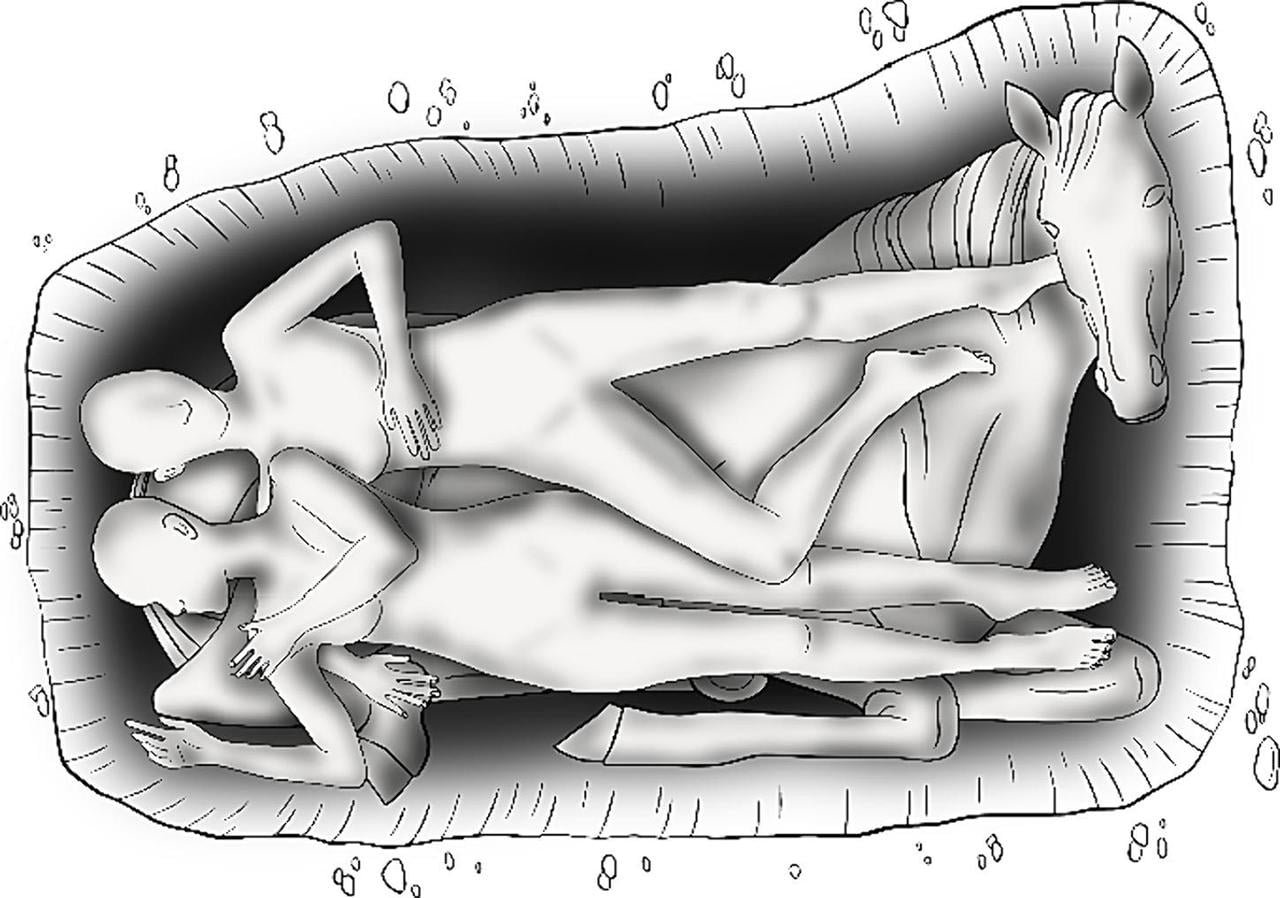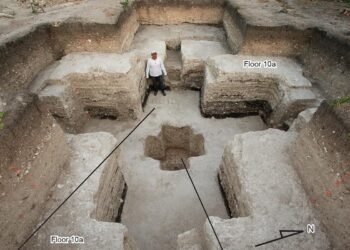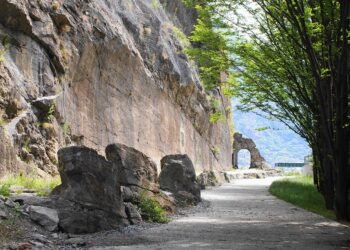In 2004, during construction work in Wels, Austria, an unusual grave was unearthed, containing the remains of two individuals embracing each other and at least one horse. Initially thought to be an early medieval double burial, the grave’s true significance has only recently come to light through comprehensive research led by anthropologist Sylvia Kirchengast and archaeologist Dominik Hagmann from the University of Vienna.

The grave, designated as Grave 12 by researchers, was located in what was once the eastern burial ground of the ancient Roman city of Ovilava. At the time of discovery, it was believed to be a medieval burial of a couple accompanied by a horse, a common practice of the era. However, subsequent analysis using bioarchaeological and archaeogenetic methods revealed surprising discoveries.
Radiocarbon dating of the grave placed its origins in the 2nd to 3rd century CE, making it significantly older than initially estimated—by approximately 500 years. This reclassification places the burial firmly within the Roman period. Furthermore, genetic analysis conducted on the human remains identified the individuals as a mother and her daughter, marking the first genetically confirmed double burial of 1st-degree relatives from the Roman period in Austria.
Dominik Hagmann, lead author of the study, remarked, “This is the first burial from Roman antiquity in Austria in which genetic analyses were able to identify a biological mother and her biological daughter, who were buried at the same time. This makes our results particularly exciting.”

Osteological examinations, combined with ancient DNA analysis, not only confirmed the biological sex of the individuals but also suggested a familial link between them. The mother, aged approximately 40 to 60, and her daughter, aged around 20 to 25, were laid to rest together alongside the horse. The older woman exhibited skeletal features indicative of frequent horseback riding, hinting at a possible reason for the horse’s inclusion in the burial—a testament to the mother’s love for equestrian pursuits and likely high social status within Roman society.
Additional insights were gleaned from the grave goods found within the burial. Two golden pendants, one shaped like a crescent moon and the other resembling a wheel, were discovered alongside the remains. These artifacts, dated to the 2nd century CE, further affirmed the Roman origins of the burial.
While the precise circumstances of the double burial remain unclear, researchers speculate that both individuals may have succumbed to an illness simultaneously, leading to their joint interment according to a tradition from the late Iron Age.
The findings were published in the Journal of Archaeological Science: Reports.






















